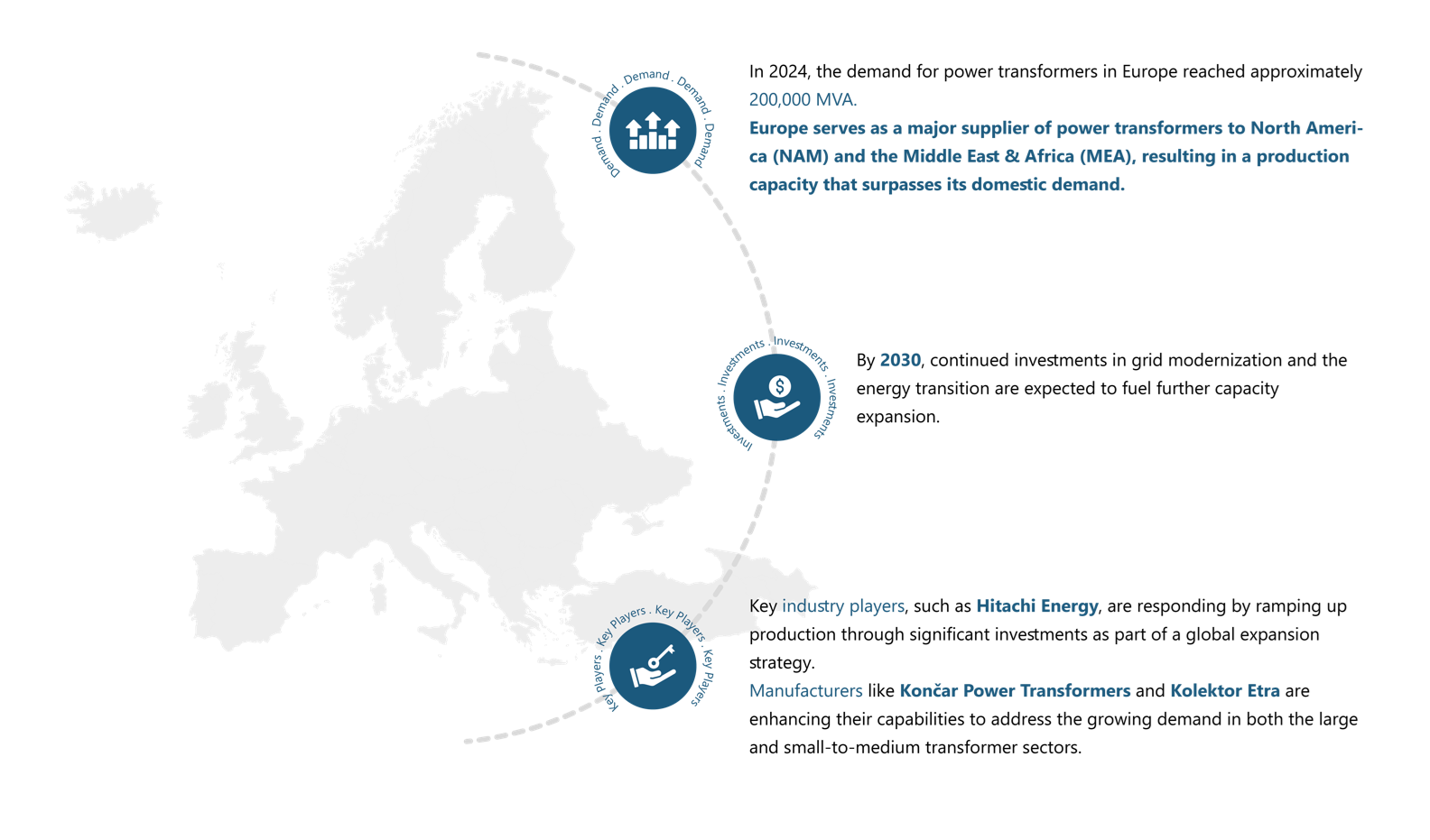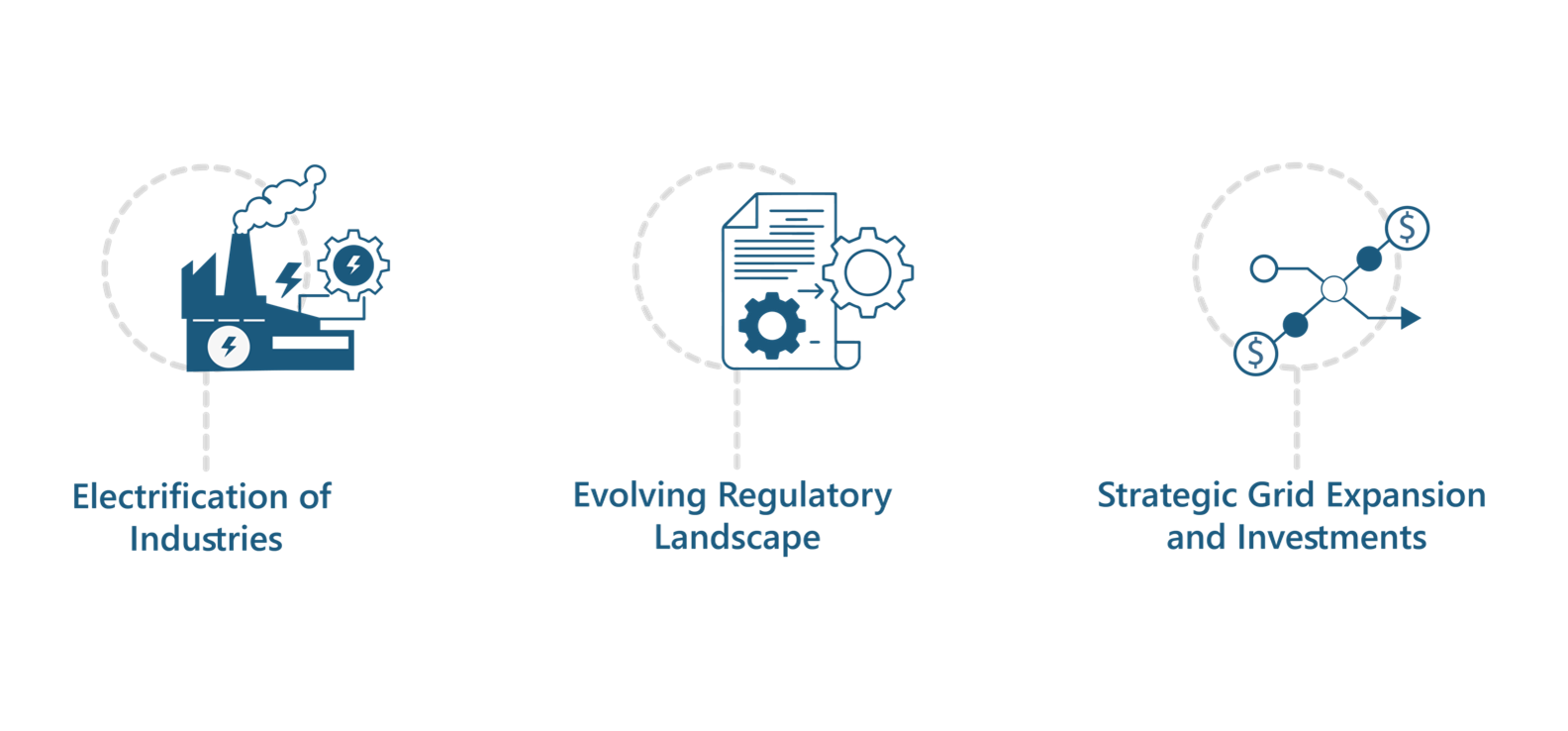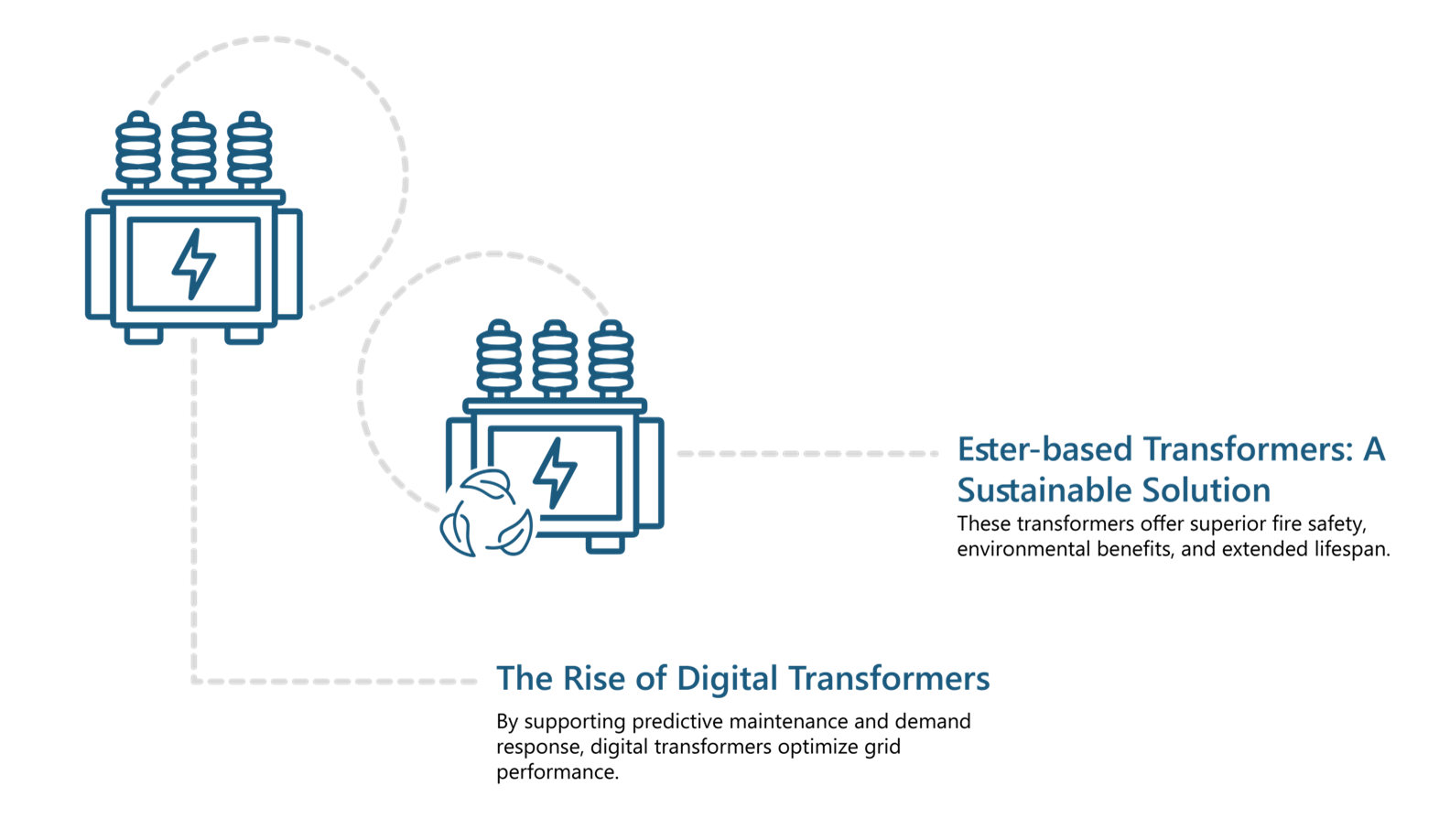Understanding the Europe power transformer market: Key drivers, challenges, and future outlook
-
In 2024, production capacity exceeded the domestic demand for power transformers.
-
Europe remains a major supplier of power transformers to the Middle East, Africa (MEA), and North America.
-
The push for electrification in Europe, particularly within the industrial sector, is expected to drive significant growth in power transformer demand.
-
The shift towards sustainable transformer solutions is driving the adoption of ester-based transformers across Europe.
The power transformer market in Europe is at a pivotal juncture as the continent’s demand for transformers surges amid a rapid energy transition. With projections indicating that demand will rise significantly in coming years, Europe’s power transformer industry is under pressure to meet both domestic and international needs. Despite having a surplus production capacity in 2024—Europe continues to face challenges in fully utilizing manufacturing capacity due to constraints in raw materials, labor shortages, and ongoing supply chain disruptions.
At the same time, the demand for transformers, particularly in renewable energy applications and grid modernization, is driving the market's evolution. This article explores the dynamic supply-demand landscape, key industry developments, and technological innovations shaping the future of Europe’s power transformer sector.
Supply-Demand Dynamics, Production Landscape, and Key Market Developments
In 2024, Europe’s demand for power transformers reached nearly 200,000 MVA, with projections expecting it to rise significantly in the coming years. In 2024, production capacity exceeded the domestic demand for power transformers. Europe remains a major supplier of power transformers to the Middle East, Africa (MEA), and North America.Despite new manufacturing facilities coming online, demand is anticipated to outpace supply. European manufacturers, though fully booked, face production constraints due to shortages in raw materials, skilled labor, and ongoing supply chain disruptions, limiting their ability to utilize capacity fully.
Europe’s power transformer industry continues to be a global leader, with production capabilities exceeding regional needs and robust export activity, particularly in large transformers. The small-to-medium segment is seeing rapid growth, driven by the rise of renewable energy. By 2030, continued investments in grid modernization and the energy transition are expected to fuel further capacity expansion. However, the rising demand for large transformers is expected to extend lead times, pushing them beyond the current 4–5-year timeline.
Key industry players, such as Hitachi Energy, are responding by ramping up production through significant investments as part of a global expansion strategy. Additionally, manufacturers like Končar Power Transformers and Kolektor Etra are enhancing their capabilities to address the growing demand in both the large and small-to-medium transformer sectors.
Explore Transformer Manufacturers at CWIEME Berlin

Figure 1: Supply-demand dynamics in the Europe power transformer market.
Source: PTR Inc.
Trends Shaping the Power Transformer Market in Europe
The evolving regulatory landscape, strategic grid expansion, and industrial electrification are key factors that are collectively shaping the future of Europe’s power transformer market.
Evolving regulatory landscape
-
The EU Green Deal aims for climate neutrality by 2050, focusing on grid modernization, renewable energy integration, and the adoption of advanced technologies. Key initiatives target upgrading infrastructure, improving energy efficiency, and promoting sustainable power systems.
-
The Fit for 55 package sets a goal to cut greenhouse gas emissions by 55% by 2030, with a renewable energy target of 40% by 2030. This legislative move is central to achieving the EU’s 2050 net-zero emissions target.
-
The Eco-design Directive, aligned with Tier-2 standards, sets ecological criteria for energy-related products like power transformers. It could unlock energy savings of 16.2 TWh annually by 2025, reducing CO2 emissions by 3.7 million tons.
Strategic grid expansion and investments
The National Energy and Climate Plan (2021–2030), along with TYNDP 2024, stresses the need for investments in energy security, renewable integration, and grid modernization. TYNDP 2024 envisions a 108 GW increase in cross-border transmission capacity by 2040, growing to 224 GW with 540 GW of storage by 2050. These expansions are critical for supporting the energy transition.
Several major grid development projects are underway:
-
Ostbayernring Transmission Corridor (Germany): A USD 490 million loan was approved for TenneT to expand grid capacity, boosting renewable energy integration in Bavaria.
-
Norfolk Vanguard Offshore Wind Project (UK): A 2,800 MW offshore wind farm set to be completed by 2031 as part of the UK’s renewable energy strategy.
-
Colunga-Calenzano Grid Reinforcement (Italy): Upgrading the 220 kV line to 400 kV, enhancing grid stability and transmission capacity between northern and central Italy.
-
Black Sea Corridor Transmission Project: A 400 kV transmission line between Romania and Bulgaria, strengthening electricity transfer to Central and South-Eastern Europe.
-
Aurora Line – Finland-Sweden Interconnector: A 400 kV line to enhance electricity exchange between northern Finland and Sweden, addressing energy security in the Nordics.
-
Serbia-Croatia 400 kV Interconnection: A transmission line to boost cross-border electricity exchange between Serbia and Croatia, enhancing power flows in Central and Southeastern Europe.
-
South Balkan Corridor: A 400 kV line from North Macedonia to Albania, strengthening East-West power transmission across the region.
Electrification of industries
The push for electrification in Europe, particularly within the industrial sector, is expected to drive significant growth in power transformer demand. Efficient transmission infrastructure will play a pivotal role in integrating renewable energy and ensuring grid stability.
Currently, industries account for about a third of Europe’s total power consumption, but only 4% of high-emission heating processes have shifted to electric alternatives. Electrifying these operations presents a major opportunity to reduce emissions while increasing electricity demand. As industries transition away from fossil fuels, investments in clean energy technologies are expected to rise, further accelerating the adoption of renewable energy sources.

Figure 2: Trends shaping the power transformer market in Europe.
Source: PTR Inc.
Technological Advancements in the Europe Power Transformer Market
As Europe continues to prioritize sustainability and grid modernization, technological advancements are playing a key role in shaping the future of the power transformer market. The adoption of digital and eco-friendly transformer solutions not only aligns with the continent's green energy goals but also addresses the growing demands for efficiency, reliability, and environmental responsibility in the energy sector.
The rise of digital transformers
With Europe’s push towards smart grid development, digital transformers are becoming increasingly vital. These advanced transformers integrate power electronics, communication systems, and real-time monitoring, offering improved efficiency and reliability over traditional models. By supporting predictive maintenance and demand response, digital transformers optimize grid performance. Beyond substations and transmission, they are essential in sectors such as manufacturing, renewables, and data centers. The growing focus on energy efficiency and industrial automation is further fueling their adoption.
Ester-based transformers: A sustainable solution
The shift towards sustainable transformer solutions is driving the adoption of ester-based transformers across Europe. Filled with biodegradable fluids, these transformers offer superior fire safety, environmental benefits, and extended lifespan. Utilities and manufacturers are embracing ester-based transformers to meet sustainability targets, while their ability to handle fluctuating loads makes them well-suited for renewable energy applications, supporting Europe’s green energy transition.
Read more about how distribution transformers are enhancing Europe’s grid stability.

Figure 3: Technological advancements in the power transformer market.
Source: PTR In
Looking Ahead
As Europe continues to pursue its ambitious energy goals, the Europe power transformer market is set to play a critical role in supporting grid modernization, the integration of renewable energy, and the broader industrial electrification effort. The growing demand for smarter, more sustainable transformer solutions—coupled with strategic investments in infrastructure—will drive innovation and shape the future of the sector.
However, challenges such as supply chain disruptions and capacity limitations must be addressed to fully capitalize on these opportunities. Ultimately, the evolution of Europe’s power transformer market is not only vital for achieving climate targets but also for ensuring a reliable, efficient, and green energy future for the continent.
Stay ahead of trends by attending the industry’s largest coil winding and electrical engineering event.

Syeda Maheen Mahmood
Analyst - PTR Inc.
Syeda Maheen Mahmood, a market analyst at PTR, has extensive experience working on topics such as transformers, power converters, DC-DC contractors, data centers, and power quality equipment. In her current role, she manages various projects and delivers in-depth research for clients across North America and Europe, utilizing both primary and secondary research methodologies. With a degree in electrical engineering from NEDUET, she has been a key contributor at PTR for over a year, offering sharp analytical insights and actionable recommendations
About PTR: With over a decade of experience in the Power Grid and New Energy sectors, PTR Inc. has evolved from a core market research firm into a comprehensive Strategic Growth Partner, empowering clients’ transitions and growth in the energy landscape and E-mobility, particularly within the electrical infrastructure manufacturing space.




















